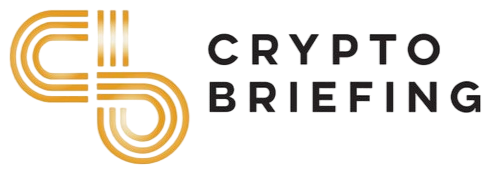In the rapidly evolving finance lands, a revolutionary force known as Decentralized Finance, or DeFi, has emerged. DeFi represents a paradigm shift from traditional financial systems, offering a decentralized, open, and inclusive alternative. In this article, we will explore the concept of DeFi and its potential to shape the future of finFinance
Defining DeFi (H2)
Decentralized FinFinanceften, called DeFi, refers to financial services and applications built on blockchain technology. Unlike traditional finFinanceeFi operates without intermediaries like banks, brokers, or central authorities. Instead, it leverages smart contracts, decentralized applications (DApps), and blockchain networks to enable peer-to-peer transactions and financial activities.
Breaking Down Traditional Barriers (H2)
One of the fundamental principles of DeFi is inclusivity. Traditional financial systems have long excluded millions of individuals worldwide due to various barriers, including geographical limitations, costly intermediaries, and complex regulatory requirements. DeFi aims to eliminate these barriers, providing access to financial services for anyone with an internet connection.
Key Components of DeFi
To understand how DeFi operates and its potential impact, it's crucial to examine its core components.
Smart Contracts (H2)
Smart contracts are self-executing agreements with the terms of the contract directly written into code. They automatically execute when predefined conditions are met. In DeFi, intelligent contracts replace the need for traditional intermediaries, such as banks, by facilitating and automating financial transactions.
Decentralized Exchanges (H2)
Decentralized exchanges (DEXs) are platforms that enable users to trade cryptocurrencies directly with one another without the need for a centralized intermediary. They use smart contracts to match buyers and sellers, providing liquidity and reducing the risk of censorship or manipulation.
Stablecoins (H2)
Stablecoins are cryptocurrencies designed to maintain a stable value, often pegged to a fiat currency like the US dollar. They provide a reliable medium of exchange within the volatile world of cryptocurrencies and play a crucial role in various DeFi applications.
Defi Use Cases
The versatility of DeFi extends to various financial services and applications. Let's explore some of the most prominent use cases.
Decentralized Lending and Borrowing (H2)
DeFi platforms allow users to lend their assets to others in exchange for interest or to borrow assets by providing collateral. This opens up new opportunities for borrowers and lenders, irrespective of their geographical location or credit history.
Yield Farming and Liquidity Provision (H2)
Yield farming involves providing liquidity to DeFi protocols in exchange for rewards, often as additional tokens. Users can participate by depositing their assets into liquidity pools, helping to ensure the efficient operation of decentralized exchanges.
Decentralized Insurance (H2)
DeFi has ventured into insurance services, allowing users to purchase coverage for smart contract vulnerabilities or other risks. These insurance policies are often governed by decentralized autonomous organizations (DAOs), providing transparency and trust.
Challenges and Concerns
Despite its tremendous potential, DeFi faces several challenges and concerns that must be addressed for widespread adoption.
Security Risks (H2)
DeFi platforms are not immune to hacks and vulnerabilities. Smart contract bugs and vulnerabilities have led to significant losses in the past. Auditing and improving security practices are critical for mitigating such risks.
Regulatory Uncertainty (H2)
The decentralized nature of DeFi raises questions about how existing financial regulations apply. Regulatory clarity is essential to ensure compliance and avoid legal challenges.
Scalability (H2)
As DeFi grows, scalability becomes a pressing issue. The Ethereum network, which hosts many DeFi applications, has faced congestion and high gas fees. Layer 2 solutions and other blockchain networks aim to address these limitations.
The Future of DeFi
The future of DeFi is ripe with possibilities and challenges. Here are some potential directions for its development.
Integration with Traditional Finance (H2)
DeFi could bridge the gap with traditional finFinance enabling the seamless exchange of assets between both worlds. Regulatory compliance and interoperability will be critical factors in achieving this integration.
Enhanced User Experience (H2)
Improvements in user interfaces and user experience will be crucial for making DeFi more accessible to mainstream users. Simplified onboarding processes and increased security measures will play a significant role in achieving this goal.
Continued Innovation (H2)
DeFi will likely continue to evolve, with new financial products and services emerging. Innovations in asset tokenization, decentralized identity, and governance mechanisms will shape the industry's trajectory.
Conclusion
Decentralized Finance, or DeFi, is a disruptive force that has the potential to redefine the financial industry as we know it. By removing barriers, increasing inclusivity, and offering a wide array of financial services, DeFi has already made a substantial impact. While challenges remain, the future of finance is undoubtedly shaped by the principles and technologies underlying DeFi. As it continues to evolve, DeFi promises to democratize finance and empower individuals globally, making it a phenomenon worth watching closely.

.jpg)